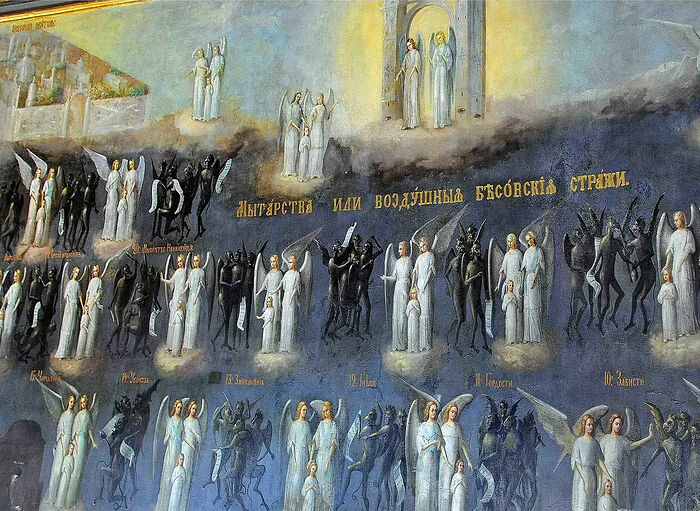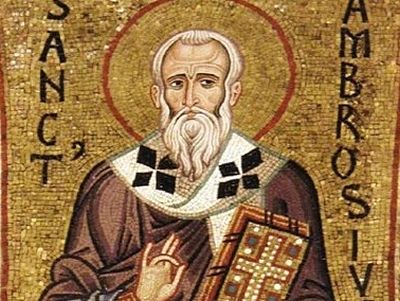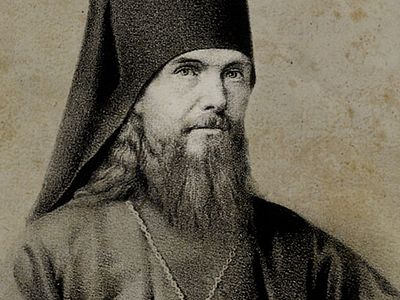Two victims of notorious priest abuser and famed Catholic artist, former Jesuit Father Marko Ivan Rupnik, have revealed their names publicly for the first time and have demanded complete transparency as a Vatican investigation moves forward.
They have also called for a full inquiry into what they say has been a systemic mishandling of the case similar to the so-called “McCarrick report” – a Vatican report that detailed the church hierarchy’s handling of allegations against ex-cardinal and ex-priest Theodore McCarrick – including what the pope’s own role might have been.
Speaking during a Feb. 21 press conference at the Rome headquarters of the National Federation of the Italian Press (FNSI), two former members of the “Skupnosti Loyola” or Loyola Community, co-founded by Rupnik and Slovenian nun Ivanka Hosta in Slovenia in the late 1980s, shared their stories publicly for the first time, having previously spoken with pseudonyms.
The women – Mirjam Kovac, 62, and Gloria Branciani, 60 – recounted years of psychological, spiritual, and sexual abuse they and many fellow sisters endured, saying they sounded the alarm over Rupnik’s abuses in the early 1990s, but were routinely ignored while Rupnik was protected.
Kovac, who is Slovenian, said that in total, Rupnik abused “at least 41 sisters” in the Loyola Community, which is “a big number for us.”
“We were all young women, full of ideals. But these ideals, together with our formation in obedience and trust in the people who guided us, were exploited for abuses of various kinds: conscience, spiritual, power, psychological, physical, and even sexual,” she said.
Branciani, a native Italian who said she was serially sexually abused by Rupnik for years, spoke of how she first met him when she was a young medical student interested in art, and that almost immediately he began grooming her by playing on her insecurities and desires for approval.
“He was very friendly, sweet, available, (he) supported all of my emotional and physical needs,” she said, saying he paid her compliments and showed her special attention.
She described Rupnik as “a spiritual father” who seemed “very spiritually advanced,” and as someone whom she trusted with her deepest desires and aspirations.
However, Branciani said Rupnik was also critical of her physical interactions with others, chastising her for being “too open” when she gave friends a hug or a kiss on the cheek while also incorporating physicality into their own relationship.
“He often watched me as he painted,” she said, saying one time he lifted the bottom of her skirt, saying it was like the Virgin Mary revealing Jesus’s humanity.
Branciani said Rupnik was exceptionally good at manipulating the people around him, and that at one point, he told her that she was special and had a vocation as a mystic. He would often celebrate Mass for her privately, coming up to give her a hug and a kiss afterward, she said.
“He said he kissed me with the passion with which he kissed the altar during the Eucharist,” she said, saying these hugs and kisses gradually became more intense, and that while she was “disoriented” by them, she was told, and believed, that the physical contact would lead to spiritual growth.
At the same time, Branciani said she grew distant from friends and family, becoming “very dependent” on Rupnik’s approval and that if she had “doubts or didn’t correspond to his desires,” she was somehow being unfaithful to God.
She recounted one episode in June of 1986 when Rupnik, prior to leaving for Greece to work on Byzantine icons, had asked to celebrate Mass with her, and that during the liturgy he asked her to undress and groped her.
When she questioned what happened afterward, she said Rupnik “exploded aggressively” at her, telling her she was good for nothing, but that she had been chosen by God to be close to him, and could be a special person in his life.
Branciani said she entered the Loyola Community in 1987, and that afterward, the physical contact with Rupnik increased and “became more violent.” Rupnik, she said, often made long car trips for his various commissions, and would use these drives to commit “more serious abuses…including the loss of my virginity.”
“Every time I tried to talk, to say that for me it was a mistake, he said this was me being unable to live sexuality, that it was related to my rigid personality,” she said.
After making her perpetual vows, she said Rupnik approached her about having a threesome with another sister in imitation of the Holy Trinity – God as father, Son, and Holy Spirit.
“To prove that our relationship was in the image of the Trinity, we needed to invite another sister to be sexual with us, she had to represent third person of the Trinity, the Holy Spirit, who united our way of having relations,” Branciani said.
She said she felt “trapped,” but agreed, as she was told by Rupnik that she was selfish, egotistical, and incapable of living a healthy sexuality. He would also tell her that her personality lacked determination and strength, and that she needed to develop those skills through sexuality.
Rupnik, she said, wanted a “collective orgy” and had twice brought her to see pornographic films, adding, “It was obvious that he was a frequent attendee of these films.”
After suffering from panic attacks and becoming deeply confused and disoriented, Branciani said she tried to bring her concerns to Hosta, the superior general, but was ignored, so she finally left the Loyola Community in 1994.
Similarly, Kovac said she suffered psychological abuse and abuse of conscience by Rupnik and Hosta, and that she also left in a state of disorientation and confusion because of the internal culture of abuse.
When the Archbishop of Ljubljana began conducting an inquiry into the Loyola Community in 2019 after receiving complaints from several sisters, Kovac said she was asked to contact other sisters who had left, and it was after that that some began speaking out.
Last fall, Hosta was sanctioned by the church to a life of prayer for the victims of her and Rupnik’s abuses, and the Loyola Community was dissolved.
Rupnik, 68, is perhaps the Catholic Church’s most famed contemporary artist, whose murals adorn shrines, chapels, and basilicas throughout the world, including the Vatican and the Marian shrine in Lourdes, but he has also become of the church’s most notorious alleged abusers.
He was briefly excommunicated in 2020 for absolving a woman with whom he’d had sexual relations, one of the church’s most serious crimes, however, the excommunication was lifted two weeks later.
Called delicta graviora, these crimes are handled by the Vatican’s Dicastery for the Doctrine of the Faith (DDF), which at the time was run by Spanish Jesuit Cardinal Luis Ladaria, meaning a fellow Jesuit, and potentially Pope Francis himself, who is also a Jesuit, would have authorized Rupnik’s rapid reinstatement.
In 2021, nine former members of the Loyola Community complained to the Vatican about Rupnik’s abuse, yet when the allegations against him broke publicly in October 2022, the then-Congregation for the Doctrine of the Faith refused to open a formal canonical inquiry, citing a statute of limitations for the abuse of adults, despite the fact that this provision has been waived in other cases.
Despite the DDF’s decision, the Jesuits barred him from ministry and imposed restrictions on his travel and commissions for new art projects. In December 2022, they invited anyone with other claims against Rupnik to come forward, which yielded 15 new complaints against him.
After refusing to cooperate with an internal Jesuit inquiry, Rupnik was expelled from the order for disobedience in June 2023.
Branciani during Wednesday’s press conference said she was among the women who provided a testimony to the DDF in 2022, and that she also gave her testimony to the Jesuits when they were conducting their own internal inquiry, but heard nothing more afterward, which is why she chose to speak out with a pseudonym.
Despite holding a meeting last September with a close ally of Rupnik, who has been incardinated into the Slovenian Diocese of Koper, Pope Francis a month later reversed course, and waived the statute of limitations on the Rupnik case, allowing a canonical trial against Rupnik to proceed.
Branciani and Kovac said they were contacted by the Vatican to be interviewed as part of the investigation into Rupnik, which is being conducted by the DDF, but that they waited because they did not want to speak without a lawyer.
Laura Sgrò, a high-profile Italian attorney with credentials in both civil and canon law, is representing Branciani and Kovac in the Rupnik case. She told journalists Wednesday that the women “will go to testify” before long.
She said the case is being handled as abuse of vulnerable adults, and indicated that they are also exploring other level avenues in the case, including potential civil charges against Rupnik at the Vatican tribunal, but offered no details.
Questions arose as to whether the DDF would continue handling the Rupnik case, or whether it might be transferred to another dicastery following a Jan. 30 “Clarification on Vulnerable Adults” from the DDF stating that their office is only responsible for abuse cases involving adults when there is a mental impairment.
Since that is not the case with Rupnik’s accusers, there was confusion as to which Vatican department was conducting the inquiry.
Vatican spokesman Matteo Bruni said in a statement following Wednesday’s press conference that the Rupnik case is still being handled by the DDF and that in recent months, “the dicastery has contacted institutions involved in the matter in various capacities to receive all of the available information relating to the case.”
“After having broadened the scope of the research to entities not previously contacted and having just received the last elements in response, it will now be a matter of studying the documentation acquired in order to identify which procedures will be possible and useful to implement,” Bruni said.
In addition to the physical abuses, Rupnik is also accused of “false mysticism,” using spiritual imagery and symbolism in his alleged abuse, styling it as part of a mystical experience of the divine, which is considered a crime against the faith.
For centuries, the DDF has prosecuted cases of false mysticism and similar crimes, however, the precise nature of these crimes is not clearly defined, and there are no provisions for these crimes in the Code of Canon Law, making it difficult for investigators to prosecute.
This legal gap has left some observers wondering whether modern abusers, such as Rupnik or a slew of other charismatic clergy and founders who stand accused of weaving false mysticism into their sexual abuse, might get away with their crimes due to a lacuna in the church’s own penal code.
Asked what the legal prescription was for Rupnik’s case, since there are no canonical provisions for false mysticism, Sgrò said this information was not disclosed by the DDF, and called for transparency, saying, “This is a case that merits transparency.”
“The victims deserve it, and the Jesuits deserve it, and all those in the church who are in front of a Rupnik mosaic deserve it,” she said, and condemned attempts by Rupnik allies to discredit his accusers.
Anne Barrett Doyle, co-director of clerical abuse survivor advocacy group Bishop Accountability, which organized Wednesday’s press conference, lamented that five years after Pope Francis’s 2019 summit on child protection, little progress has apparently been made.
Rupnik’s case indicates an “egregious coverup,” and is indicative that “little has changed in this supposed reform.”
She called for a full report detailing “every superior who may have turned a blind eye” to Rupnik’s abuses from the 1990s until now, a report she said must also address “the most troubling questions around Pope Francis’s own role in this case.”
Branciani lamented that every attempt by sisters to raise concerns about Rupnik were blocked, and that she was told that it was her problem.
“It’s not that the situation has changed…the management from the beginning has not been transparent,” she said, voicing hope that she and Kovac will be “listened to,” and that their decision to speak out would help “promote more transparency and awareness.”
“What we want is for the truth to be recognized, the wrong that we have suffered, and for us also to be given visibility because we are many, but they ask us to remain silent, to disappear in some way. They discredit us and this is no longer acceptable,” Branciani said.
As the case proceeds, Branciani said she wants “truth and justice, and that this deafening silence be broken…I do no accept that in certain circles we are defined as sissies infatuated with [Rupnik]. The harm that I and twenty others of the forty-one sisters have suffered must be recognized.”

 Cyprus: 100,000 venerate Belt of the Theotokos in Limassol (+VIDEOS)Thousands of Orthodox faithful were blessed to venerate the Holy Belt of the Most Holy Theotokos during its recent week-long stay in the Cypriot city of Limassol.
Cyprus: 100,000 venerate Belt of the Theotokos in Limassol (+VIDEOS)Thousands of Orthodox faithful were blessed to venerate the Holy Belt of the Most Holy Theotokos during its recent week-long stay in the Cypriot city of Limassol.


 St. Ambrose of MilanBorn in 340, the son of the Roman prefect of Gaul, St. Ambrose returned to Italy with his mother and his sister, St. Marcellina, after the death of their father. There he studied and became such a gifted orator and lawyer that the governor of northern Italy, charging him to ”govern more like a bishop than a judge,” selected him to be his successor in the capital of Milan.
St. Ambrose of MilanBorn in 340, the son of the Roman prefect of Gaul, St. Ambrose returned to Italy with his mother and his sister, St. Marcellina, after the death of their father. There he studied and became such a gifted orator and lawyer that the governor of northern Italy, charging him to ”govern more like a bishop than a judge,” selected him to be his successor in the capital of Milan. Theophan the Recluse
Theophan the Recluse Elder Paisios – The Signalman of GodThe sacred life of Elder Paisios of Mount Athos from a documentary based on one special book with title: ”Elder Paisios, the signalman of God” which has been published in Greece.
Elder Paisios – The Signalman of GodThe sacred life of Elder Paisios of Mount Athos from a documentary based on one special book with title: ”Elder Paisios, the signalman of God” which has been published in Greece.